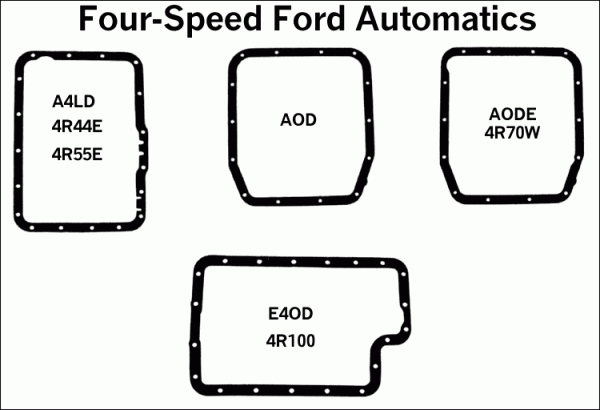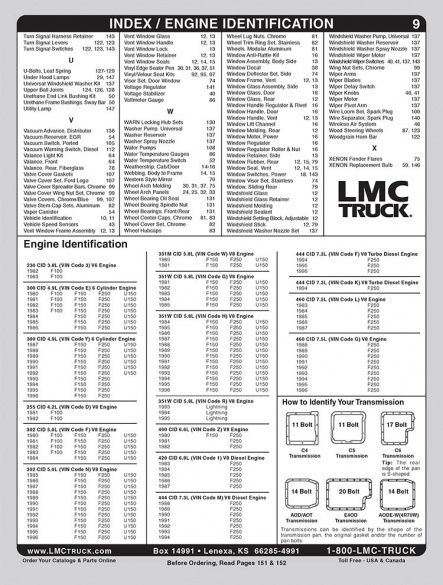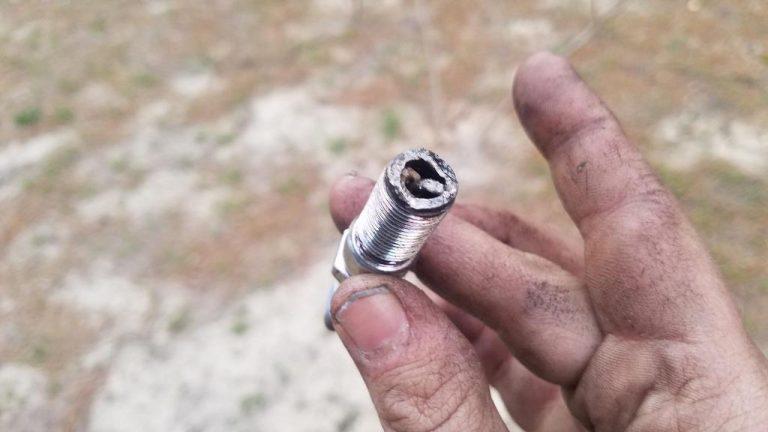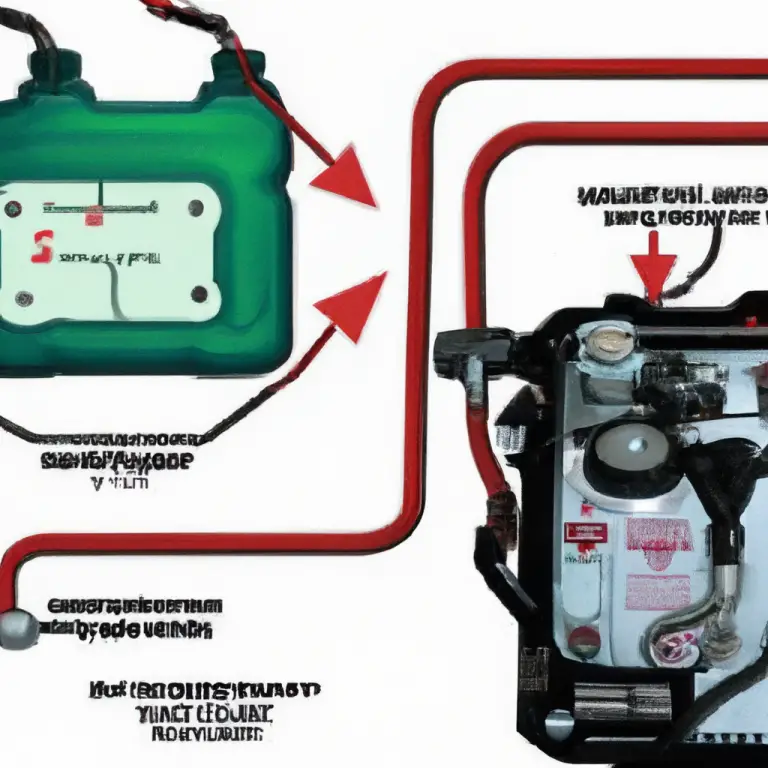What Transmission Do I Have in My F150: Find Out Now
The transmission in your Ford F150 depends on the model year and engine type. Common options include the 6-speed automatic and 10-speed automatic transmissions.
The Ford F150 is a popular and versatile truck known for its reliability and performance. Understanding your F150’s transmission is crucial for proper maintenance and optimal driving experience. Different model years and engine types come with varying transmission options, such as the 6-speed automatic and the advanced 10-speed automatic.
Knowing which transmission your F150 has can help you make informed decisions about servicing and potential upgrades. Always refer to your owner’s manual or consult a professional mechanic to confirm the exact transmission type in your vehicle. This ensures you maintain your F150’s peak performance and longevity.
Identifying Your F150 Transmission
Knowing your F150’s transmission type is crucial. It helps with maintenance and repairs. This guide will help you identify it easily.
Vehicle Identification Number (vin)
The Vehicle Identification Number (VIN) can tell a lot about your truck. You can find it on the dashboard or the driver’s side door. The VIN is a 17-character code. Each character provides specific information.
Here’s a quick breakdown:
- The first three characters are the World Manufacturer Identifier.
- Characters 4 to 8 describe the vehicle’s features.
- The ninth character is a check digit.
- The tenth character shows the model year.
- The eleventh character reveals the assembly plant.
- Characters 12 to 17 are the production sequence number.
For transmission details, focus on characters 4 to 8. You can use online VIN decoders for precise information.
Transmission Label
Another way to identify your transmission is the Transmission Label. This label is usually located on the transmission itself. It contains a series of numbers and letters. These codes can tell you the transmission type.
Follow these steps to locate the label:
- Open the hood of your F150.
- Locate the transmission unit, usually under the engine.
- Find the label on the side or bottom of the transmission.
Here is what you might see on the label:
| Code | Transmission Type |
|---|---|
| 6R80 | 6-speed Automatic |
| 10R80 | 10-speed Automatic |
| MT82 | 6-speed Manual |
Knowing these codes helps you identify and understand your transmission better. This information is essential for any repair or maintenance task.
Common F150 Transmissions
Understanding the transmission in your Ford F150 is crucial. It influences performance, fuel efficiency, and driving experience. The F150 has come with various transmission options. Let’s explore the common types.
Automatic Transmissions
Automatic transmissions are popular in F150 trucks. They offer ease of use and smooth shifting. Here are some common automatic transmissions found in F150s:
- 4R70W: A 4-speed automatic used in older models.
- 6R80: A 6-speed automatic known for reliability.
- 10R80: A 10-speed automatic in newer F150s.
Automatic transmissions handle gear changes for you. They are ideal for city driving and long trips. The modern 10R80 transmission offers better fuel efficiency and performance.
Manual Transmissions
Manual transmissions are less common but still available. They provide better control and engagement for some drivers. Here are some manual transmissions found in F150s:
- ZF S5-42: A 5-speed manual in older models.
- M5OD-R2: Another 5-speed manual with a sturdy build.
Manual transmissions require the driver to change gears. They can be more engaging and fun for driving enthusiasts. They also offer better control in off-road situations.
| Transmission Type | Speeds | Common Models |
|---|---|---|
| 4R70W | 4-Speed | 1990s F150 |
| 6R80 | 6-Speed | 2000s F150 |
| 10R80 | 10-Speed | 2010s F150 |
| ZF S5-42 | 5-Speed | 1990s F150 |
| M5OD-R2 | 5-Speed | 2000s F150 |
Knowing your F150’s transmission type is essential. It helps in maintenance and repairs. Whether automatic or manual, each type has its benefits.
Transmission By Model Year
Understanding what transmission your F150 has can be crucial. It helps with repairs, maintenance, and upgrades. This guide breaks down transmissions by model year.
Pre-2000 Models
F150 trucks before 2000 often had simpler transmissions. These models featured either manual or automatic transmissions. Here are some common types:
- Manual Transmissions: Mazda M5OD-R2 and Borg-Warner T18
- Automatic Transmissions: C6 and AOD
These transmissions were known for their durability. They were simpler but effective for the era.
2000-2010 Models
In the 2000s, F150 transmissions saw improvements. Ford introduced more advanced automatic transmissions. Here are a few examples:
| Year | Transmission Type |
|---|---|
| 2000-2003 | 4R70W Automatic |
| 2004-2008 | 4R75E Automatic |
| 2009-2010 | 6R80 Automatic |
The 4R70W and 4R75E were four-speed automatics. The 6R80 introduced a six-speed automatic, improving fuel efficiency.
2011-present Models
Modern F150s come with even more advanced transmissions. These include six-speed, ten-speed, and hybrid options. Here are some key transmissions:
- 2011-2014: 6R80 Automatic
- 2015-2020: 10R80 Automatic
- 2021-Present: 10R80 Automatic and Hybrid 10-speed
The 10R80 offers smoother shifts and better fuel economy. Hybrid models provide even more efficiency and power.

Credit: www.f150forum.com
Decoding The Vin
Understanding your Ford F150’s transmission starts with decoding the Vehicle Identification Number (VIN). The VIN is a unique code that provides essential information about your truck, including the type of transmission it has. By learning how to decode the VIN, you can quickly identify the specific transmission model in your F150.
Where To Find The Vin
The VIN can be found in several locations on your F150. The most common places include:
- The driver’s side dashboard, visible through the windshield.
- The driver’s side door frame.
- On the engine block.
- In the owner’s manual.
Vin Digit Meanings
The VIN consists of 17 characters, each representing specific details about your vehicle. Here’s a breakdown of key digits related to identifying your transmission:
| VIN Position | Meaning |
|---|---|
| 1-3 | World Manufacturer Identifier (WMI) |
| 4-8 | Vehicle Descriptor Section (VDS) |
| 9 | Check Digit |
| 10 | Model Year |
| 11 | Assembly Plant |
| 12-17 | Vehicle Identifier Section (VIS) |
Focus on the Vehicle Descriptor Section (VDS) and Vehicle Identifier Section (VIS). These parts usually contain transmission information. The specific digit for the transmission varies by model year.
Use an online VIN decoder tool to make this process easier. Simply enter your VIN, and the tool will provide detailed information about your F150, including the transmission type.
Checking The Transmission Label
If you want to know which transmission your Ford F150 has, checking the transmission label is the way to go. This label provides essential details about the transmission type and specifications. Here’s how to locate and read it:
Locating The Label
The transmission label is typically found on the driver’s side door jamb. Open the driver’s side door and look for a sticker or metal plate. This label contains several codes and numbers. It may also be found under the hood on the transmission itself.
| Location | Description |
|---|---|
| Driver’s Side Door Jamb | Sticker or metal plate with transmission details. |
| Under the Hood | Label on the transmission case. |
Reading The Label
The label contains a mix of letters and numbers. Look for the section labeled “TR” or “Transmission.” This code tells you the transmission type.
Here’s an example of what you might see:
- TR: 6R80
The code “6R80” indicates a specific transmission model used in F150 trucks. Refer to your owner’s manual for a detailed explanation of the codes.
Understanding these codes helps you know more about your vehicle’s transmission. It’s useful for maintenance and repairs.
Online Resources For Identification
Identifying the transmission in your Ford F150 can be easy. There are many online resources that help. These resources can provide accurate information quickly. Here are some trusted sources you can use.
Official Ford Website
The Official Ford Website is a reliable source. It offers precise information about your F150’s transmission. Follow these steps:
- Visit the Ford Official Website.
- Navigate to the ‘Support’ or ‘Owner Resources’ section.
- Enter your vehicle’s VIN (Vehicle Identification Number).
- Access detailed information about your transmission.
Using the VIN ensures you get accurate details. This method is fast and easy.
Automotive Forums
Automotive Forums are community-driven. They provide a wealth of shared knowledge. Popular forums include:
These forums have dedicated sections for different F150 models. Steps to find information:
- Register on the forum.
- Search for your specific F150 model.
- Ask questions or browse existing threads.
Forums are great for getting advice from other F150 owners. They also provide real-world experiences and tips.
Professional Assistance
Identifying the transmission in your F150 can be tricky. Seeking professional assistance is a wise choice. Experts can provide accurate and quick answers. Below are some effective ways to get professional help.
Visiting A Dealership
Visiting a dealership is often the best route. They have detailed records of your vehicle. Bring your vehicle identification number (VIN). The VIN helps them identify the exact transmission type. Dealerships have trained staff who know the ins and outs of F150 trucks.
Benefits of visiting a dealership include:
- Access to manufacturer-specific information
- Professional and certified mechanics
- Potential for warranty coverage
Consulting A Mechanic
Another great option is consulting a mechanic. A local mechanic can inspect your truck. They can determine the transmission type through a hands-on examination. This is especially useful if your truck is older or modified.
Key advantages of consulting a mechanic:
- Personalized service and attention
- Hands-on inspection of your vehicle
- Potential for immediate repairs or maintenance
| Professional Assistance | Benefits |
|---|---|
| Visiting a Dealership | Manufacturer-specific information, certified mechanics, warranty coverage |
| Consulting a Mechanic | Personalized service, hands-on inspection, immediate repairs |

Credit: www.f150forum.com
Transmission Maintenance Tips
Your F150’s transmission is a critical component. Proper maintenance ensures long-lasting performance. Follow these tips to keep your transmission in top shape.
Regular Fluid Checks
Check the transmission fluid regularly. Ensure it’s at the correct level. Low fluid can cause transmission issues.
Use the dipstick to check the fluid. Make sure the vehicle is on a flat surface. The engine should be warm but not running.
Steps to Check Transmission Fluid:
- Park the vehicle on a level surface.
- Start the engine and let it warm up.
- Locate the transmission dipstick.
- Pull out the dipstick and wipe it clean.
- Insert the dipstick back in and pull it out again.
- Check the fluid level and color.
Note: The fluid should be a bright red color. If it’s dark or smells burnt, it needs changing.
Recognizing Warning Signs
Recognizing warning signs can prevent major issues. Listen for strange noises. Look for unusual behavior in your vehicle.
Common Warning Signs:
- Strange noises like whining or clunking.
- Delayed or rough shifting.
- Transmission slipping or surging.
- Warning lights on the dashboard.
If you notice any of these signs, seek professional help. Ignoring these signs can lead to expensive repairs.
Keep an eye on your F150’s transmission. Regular maintenance is key to a long-lasting vehicle.

Credit: www.f150forum.com
Frequently Asked Questions
How Do I Know What Transmission I Have In My Ford F-150?
Check the owner’s manual or the white sticker on the driver’s side door jamb. You can also use the VIN number to look up the transmission type online.
Can I Look Up My Transmission By Vin Number?
Yes, you can look up your transmission by VIN number. Use online tools or contact your car manufacturer.
What Transmission Does The 5.0 F-150 Have?
The 5. 0 F-150 comes with a 10-speed automatic transmission. This transmission offers smooth and efficient shifting for optimal performance.
What Transmission Does A 2010 F-150 5.4 Have?
The 2010 Ford F-150 5. 4 has a 6-speed automatic transmission. This transmission provides smooth shifting and enhanced fuel efficiency.
Conclusion
Identifying your F150’s transmission is crucial for maintenance and upgrades. Check your owner’s manual or VIN for details. Understanding your transmission helps ensure optimal performance and longevity. Stay informed and keep your truck running smoothly. For more tips and information, consult a professional mechanic or visit reliable automotive websites.





